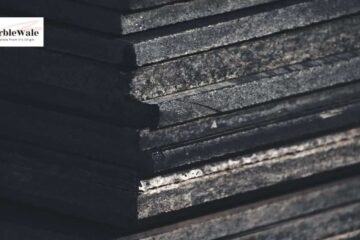Fencing Materials – Pros and Cons of Wood, Vinyl, Metal, and More

Choosing the right fencing material for your property is a crucial decision that involves considering various factors such as durability, aesthetics, maintenance, and budget. When searching for the perfect fencing solution, residents in Dayton can turn to the expertise of the Dayton Fence Company. With a plethora of options available, each fencing material comes with its own set of advantages and disadvantages. In this guide, we’ll explore the pros and cons of some popular fencing materials, including wood, vinyl, metal, and more.
Wood Fencing:
Wood fencing exudes a timeless charm and remains a popular choice for its natural aesthetic appeal. Its warm tones and classic design complement a variety of architectural styles, providing a welcoming and traditional look to any property. One of the key advantages of wood fencing is its customization options. Homeowners can easily tailor the fence to their preferences in terms of height, style, and color, making it a versatile choice for different landscapes.
However, wood fencing comes with its share of challenges. Regular maintenance is crucial to prevent rot, decay, and insect infestations. Staining or painting is often required to protect the wood from the elements, and this ongoing care can be time-consuming and costly. Additionally, wood may not be the most durable option, as it is susceptible to damage from harsh weather conditions over time.
Pros:
- Aesthetic Appeal: Wood fences provide a timeless and classic look that complements various architectural styles.
- Customization: Easy to customize in terms of height, style, and color.
- Eco-friendly: Wood is a natural and renewable resource.
Cons:
- Maintenance: Requires regular staining or painting to prevent rot and decay.
- Durability: Prone to damage from insects, rot, and weather conditions.
Vinyl Fencing:
Vinyl fencing has gained popularity for its low maintenance and durability. Homeowners appreciate the fact that vinyl doesn’t rot, warp, or fade, reducing the need for constant upkeep. This makes it an ideal choice for those seeking a long-lasting fencing solution without the hassle of regular maintenance. The variety of styles and colors available in vinyl fencing allows homeowners to find an option that suits their aesthetic preferences.
However, the initial cost of vinyl fencing can be higher than some other materials. Additionally, in the event of damage, repairing vinyl panels can be challenging, often requiring the replacement of entire sections rather than individual components.
Pros:
- Low Maintenance: Vinyl requires minimal maintenance, as it doesn’t rot, warp, or fade.
- Durability: Resistant to insects and weather conditions, making it a long-lasting option.
- Variety: Available in various styles and colors.
Cons:
- Cost: Initial installation costs can be higher than some other materials.
- Limited Repair Options: If damaged, vinyl panels often need to be replaced entirely.
Metal Fencing (Iron, Aluminum, Steel):
Metal fencing, whether crafted from iron, aluminum, or steel, is renowned for its durability and security features. Metal fences are sturdy, providing a reliable barrier against pests, weather elements, and potential intruders. They are often chosen for their longevity and ability to withstand the test of time. Aluminum and steel, in particular, require minimal maintenance, making them a practical choice for homeowners looking for a hassle-free option.
Despite their numerous advantages, metal fences are not without drawbacks. Iron fences, in particular, may be susceptible to rust over time, requiring proactive maintenance to prevent corrosion. Additionally, the initial cost of fence installation Dayton Ohio, for a metal fence can be higher compared to some alternatives.
Pros:
- Durability: Metal fences are sturdy and resistant to pests, weather, and decay.
- Security: Provides a high level of security and can be designed with anti-climb features.
- Low Maintenance: Requires minimal maintenance, especially aluminum and steel.
Cons:
- Rust: Iron fences can rust over time, requiring maintenance to prevent corrosion.
- Cost: Depending on the type of metal, initial costs can be higher.
Chain Link Fencing:
Chain link fencing stands out as a cost-effective option that provides basic security and visibility. Its affordability makes it an attractive choice for budget-conscious homeowners, and its open design allows for an unobstructed view of the surroundings. With minimal maintenance requirements, chain link fences are practical for those seeking a straightforward and economical fencing solution.
On the downside, chain link fencing may not be considered as aesthetically pleasing as other materials. It lacks the privacy that some homeowners desire due to its open structure, making it less suitable for properties where seclusion is a priority.
Pros:
- Affordability: One of the most budget-friendly options.
- Low Maintenance: Requires minimal maintenance.
- Visibility: Allows for an unobstructed view of the surroundings.
Cons:
- Aesthetics: May not be considered as visually appealing as other materials.
- Limited Privacy: Offers little to no privacy due to the open design.
Composite Fencing:
Composite fencing, made from a blend of wood and plastic materials, offers a compromise between the natural beauty of wood and the durability of synthetic materials. Resistant to rot, decay, and insects, composite fencing requires minimal maintenance, making it an appealing option for homeowners seeking a low-effort solution. The material is also designed to mimic the look of wood without the associated upkeep, providing an aesthetically pleasing alternative.
However, composite fencing comes with a higher upfront cost compared to traditional materials. Some composite options may also have limited color choices, restricting the range of customization available to homeowners. Despite these drawbacks, many see the long-term benefits and ease of maintenance as worthwhile trade-offs.
Pros:
- Durability: Resistant to rot, decay, and insects.
- Low Maintenance: Requires minimal upkeep.
- Aesthetics: Mimics the look of wood without the associated maintenance.
Cons:
- Cost: Can be more expensive than traditional materials.
- Limited Color Options: Some composite materials have a restricted range of color choices.
Conclusion:
Choosing the right fencing material involves balancing aesthetic preferences, budget constraints, and long-term maintenance considerations. Each material has its unique set of advantages and disadvantages, and the ideal choice depends on individual needs and priorities. Whether you prioritize the natural beauty of wood, the low maintenance of vinyl, the durability of metal, or the affordability of chain link, understanding the pros and cons will help you make an informed decision for a fencing solution that meets both your functional and aesthetic requirements.
Leave a reply
You must be logged in to post a comment.









